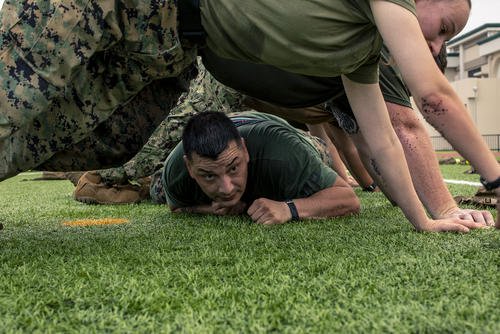Aerobic exercise and strength training offer unique and complementary benefits for brain health, according to a growing body of research.
While each activity alone can support cognitive function, engaging in both forms of exercise together provides enhanced protection, promotes the growth of brain tissue and improves executive function in the brain, especially as we age.
For those of you who enjoy either cardio or strength training, do not worry because you receive benefits from both. However, the combination of the two is overwhelmingly positive, and learning how to integrate them into your training day can be life-changing.
Read Next: How Special Operations Candidates Should Approach Workouts to Become Stronger
Adding cardio to your strength training can be as easy as walking an extra 30 to 45 minutes spread throughout the day. Adding resistance training can be as simple as incorporating squats and push-ups into your daily routine. Incorporating dumbbells or a weight vest can benefit your body composition and help build a foundation of strength while also protecting the brain from aging.
Here is the science behind strength training and cardio activity.
Cardio Exercise Boosts Brain Tissue and Memory
Aerobic exercise has a unique ability to increase the volume of the hippocampus, a critical brain region essential for memory and learning. In a study, older women with probable mild cognitive impairment who participated in aerobic exercise for six months showed measurable growth in hippocampal tissue.
Because of the added cardio activity, this change in brain tissue improved memory and learning abilities, supporting the role of cardio in not only maintaining but also enhancing cognitive function as we grow older.
Keep moving, even if that means just accumulating steps spread throughout the day. Set a goal of 5,000 to 10,000 steps a day.
Strength Training Enhances Executive Function and Neuroprotection
Strength or resistance training also plays a critical role in brain health.
Studies have shown that resistance training enhances global cognition, encompassing memory, reasoning, learning and processing speed. Brain functions such as attention control, working memory and improved thinking through new tasks and situations are all crucial for maintaining independence and making logical decisions as we age.
The Power of Combining Cardio and Strength Training
While each exercise method offers distinct advantages, combining aerobic and resistance training maximizes the benefits for brain health.
Aerobic activity primarily drives hippocampal growth and supports memory and learning, while strength training enhances executive function, inhibitory control and protects the brain from aging-related changes.
Concurrent training studies have demonstrated that these activities offer dual support and protection to the brain, enhancing cognitive performance in the present and reducing the risk of cognitive decline in the future.
Mix it Up Each Day
A well-rounded exercise routine that includes aerobic cardio and strength training is one of the most effective strategies for maintaining and enhancing brain health throughout life.
Combine complementary benefits of both forms of exercise by getting creative with your training:
Strength Training
Mix calisthenics with using dumbbells or weight machines to build major muscle groups in the legs, core system, and upper body and arms. Try lifting weights every other day as a starting point, then create split routines, such as upper-body and lower-body splits, as you progress with your training.
Any strength training day can be followed by a 20- to 30-minute walk or another form of cardio activity, such as biking, rowing, using an elliptical machine or jogging, depending on your abilities.
Here are some full-body workout ideas.
Cardio Training
Create the habit of walking, jogging or running, or you can choose a nonimpact cardio option such as swimming, biking, rowing or the elliptical machine, depending on your abilities and any previous injuries.
Moving your body each day will protect your brain and reduce stress. Setting a daily goal of steps or miles accumulated is an easy way to keep focus on what you need to do. See how to improve cardio fitness safely.
Check out more articles in the Military.com Fitness Section on walking, running, rucking, fitness testing, strength training and endurance training for the tactical athlete as well as the retiree. They will help you understand the methods of staying healthy for life.
Want to Learn More About Military Life?
Whether you're thinking of joining the military, looking for fitness and basic training tips, or keeping up with military life and benefits, Military.com has you covered. Subscribe to Military.com to have military news, updates and resources delivered directly to your inbox.



















